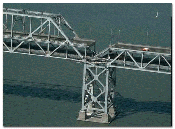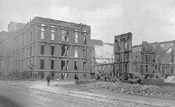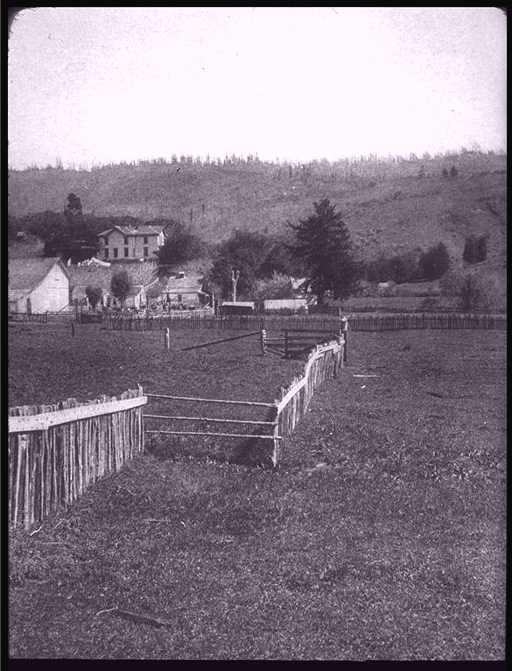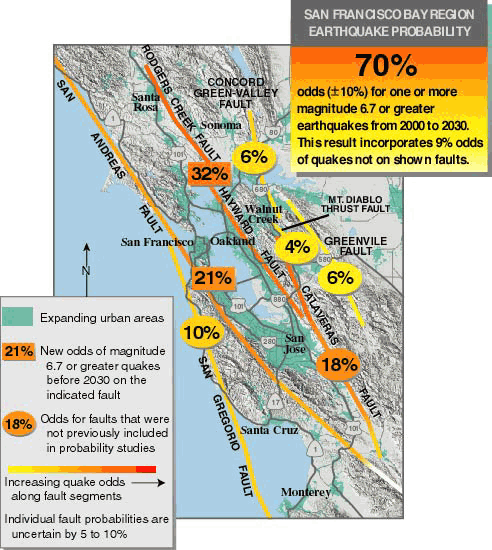|

The Bay Bridge in San Francisco didn't fare too
well during the earthquake of 1989, when a portion
of its upper deck collapsed onto the lower
deck.

A building in downtown San Francisco damaged in the
1906 quake.

Damage to a garage in the North Beach area, near
Embarcadero.

Damage on East Howard Street after the 1906
earthquake.
|
Geology of San
Francisco
San Francisco
is situated on the central west coast of
California, in the San Francisco Bay Area. It is
basically an island, connected to the rest of the
Bay Area by bridges such as the Golden Gate and Bay
Bridge. San Francisco is built mainly on bayfill,
although some apartment buildings on hills (such as
Nobb Hill) have foundations on bedrock.
|

|
This
rupture occurred during the 1906 San
Francisco earthquake along the San Andreas
fault at Point Reyes. The offset near this
point was 21 feet.
|
The city is
situated near many active faults. The San Andreas,
Hayward, and San Gregorio faults all lie in the Bay
region, to name a few. The Hayward fault caused an
earthquake in 1868 in San Francisco, dubbed the
"Great San Francisco Earthquake" prior to 1906's
infamous quake. The 1906 quake was the result of
shifting along the San Andreas. More recently, the
1989 Loma Prieta quake also occurred on the San
Andreas, though not nearly as widespread as the
1906 quake.

In the next 30
years, there exists a 70% chance that a major
earthquake (magnitude 6.7 or higher) will strike
the Bay Area. The highest probabilities for an
earthquake are the Rodgers Creek (32%), Hayward
(21%), and Calaveras (18%) faults, though an
earthquake can occur at any time or place.
Because of
these factors, it is imperitive to protect yourself
and your family from potential earthquakes. From
past experience, we can conclude that the best
building during an earthquake has a wood frame and
is built on bedrock. A concrete building has a
higher probability of collapse and more potential
to produce serious injury. A foundation consisting
of bayfill or sand would result in a serious
liquefaction problem.
But only
having the right building won't necessarily protect
you during--or even after--an earthquake. You need
to know what to do in any case, whether you're at
home, at work, or at school. Continue to the next
page to learn how to prepare for an
earthquake.
--by
Alex Hoff
�
|
�
|